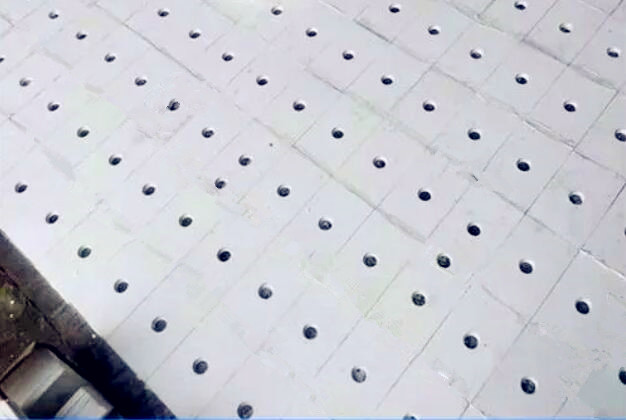Introduction:
Wear-resistant ceramics play a pivotal role in industrial wear resistance, with a particular emphasis on their high-temperature resistance. In environments characterized by significant temperature fluctuations or elevated operational temperatures, the judicious selection of wear-resistant ceramics and appropriate installation methods becomes paramount for ensuring both safety and energy efficiency.

1. Material Purity and its Impact on High-Temperature Resistance:
First and foremost, the purity of the material, especially in the context of alumina-based wear-resistant ceramics, holds a crucial role in determining high-temperature resistance. Alumina ceramics, commonly synonymous with wear-resistant ceramics, are synthesized through high-temperature sintering at approximately 1700°C, endowing them with remarkable inherent heat resistance. However, the practical application of alumina ceramics introduces a critical factor – purity. If the alumina purity is compromised, introducing other elements into the ceramics, variations in thermal expansion and contraction may occur under extreme temperatures. This becomes especially noticeable during rapid or drastic temperature changes. Thus, a meticulous selection of ceramics with elevated purity levels, exemplified by Sanxin New Materials SX-AO99 alumina ceramics, becomes imperative for ensuring optimal high-temperature performance.
2. Influence of Installation Methods on High-Temperature Resistance:
The manner in which wear-resistant ceramics are installed directly influences their ability to withstand high temperatures. Traditional ceramic adhesives, for instance, exhibit a limited temperature range, typically capping at around 150°C. Specialized ceramic adhesives, such as those offered by Sanxin New Materials Ceramics, can extend this threshold to approximately 350°C. However, exceeding these temperature limits poses a significant risk, leading to a sharp decline in adhesion and potential detachment of ceramics. Alternative installation methods, like bolt welding or dovetail groove installations, offer enhanced temperature resilience, capable of withstanding temperatures up to 750°C. The advent of novel solutions, like Sanxin New Materials integral molded wear-resistant ceramic pipes, further mitigates the limitations associated with conventional installation methods, substantially improving overall temperature resistance.
3. Composite Materials and their Impact on High-Temperature Resistance:
Wear-resistant ceramics frequently integrate with other materials, such as metals or rubber. Evaluating the high-temperature resistance of wear-resistant ceramics necessitates a comprehensive consideration of the temperature tolerance of these composite materials. For instance, ceramic-rubber composite materials, owing to the limitations of rubber at elevated temperatures, prove unsuitable for high-temperature working conditions.
Conclusion:
In conclusion, the high-temperature resistance performance of wear-resistant ceramics is intricately tied to three fundamental factors: the material purity of ceramics, the installation methods employed, and the materials with which ceramics are compounded. A holistic consideration of these factors becomes imperative when selecting wear-resistant ceramics, especially in applications where high temperatures or temperature fluctuations are prevalent. Sanxin New Materials Ceramics, with its commitment to advanced materials and innovative installation methods, stands as a exemplar in addressing and overcoming these challenges, ensuring the optimal performance of wear-resistant ceramics in high-temperature environments.

Submit your demand,
we will contact you ASAP.

Sanxin New Materials Co., Ltd. focus on producing and selling ceramic beads and parts such as grinding media, blasting beads, bearing ball, structure part, ceramic wear-resistant liners, Nanoparticles Nano Powder

